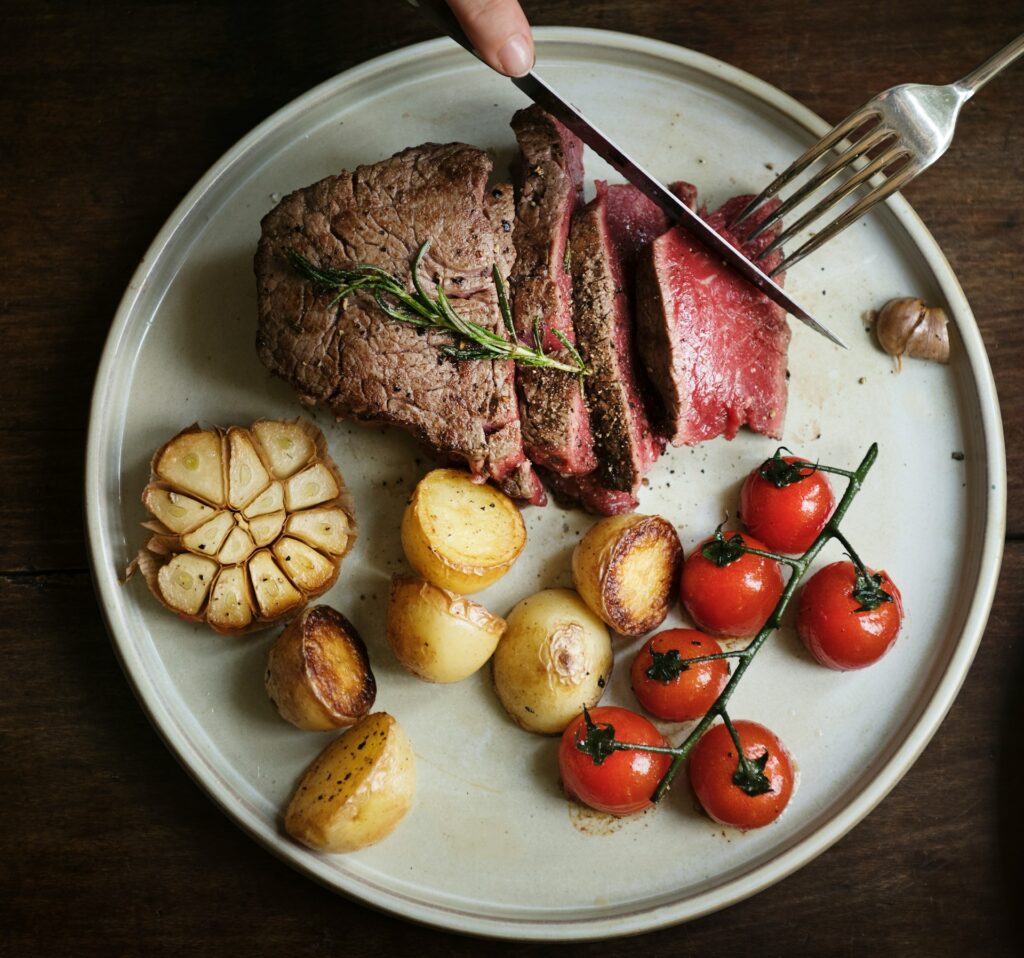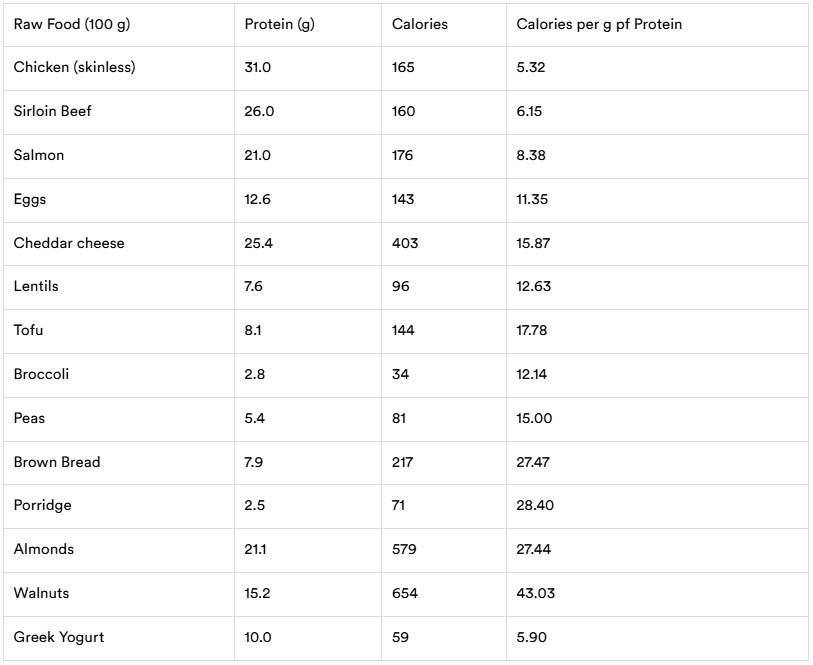I’ve just filled my car with V-Power petrol. It’s pricier, but it promises to clean and protect my engine, even rejuvenate it, and boost performance, so my car runs more efficiently for longer.
Perhaps, I’ve been a sucker for the power of advertising, but having taken time to select the right fuel for my car, should I also be more mindful of what fuels me?
For that I’ll need L-Power, where “L” stands for Longevity.
Quality Fuel for Your Body
The type of food we eat, and the amount directly shapes the make-up of our entire body, down to the health of every individual cell. Quality nutrition is a long-term investment in building strong, healthy humans, especially in older age. Just like the wrong, or poor-quality fuel, a bad diet increases the risk of many chronic conditions, such as type 2 diabetes, obesity, cancer, sarcopenia, and dementia.
Of course, food alone is not sufficient for longevity, but it is an essential building block.
Finding Your Daily Fuel Needs
The first step is to determine your daily calorie count. This will depend on gender, body composition (e.g. size and level of muscle mass), age and activity level, as well as whether the count is for weight maintenance, loss or gain.
Basal Metabolic Rate (BMR): This is the calories your body needs at rest for essential functions (such as breathing, heart pumping or digestion).
The formulae are:
- Males: BMR = (10 x weight in kg) + (6.25 x height in cms) – (5 x age in years) +5
- Females: BMR = (10x weight in kg) + (6.25x height in cms) – (5 x age in years) – 161
Source: Harris-Benedict equation
Total Daily Energy Expenditure (TDEE): This determines how many calories your body burns in a day. Calories input should equate to calories burned to maintain weight.
TDEE equates to BMR multiplied by a factor dependent on physical activity.
- Sedentary: x 1.2
- Light active: x 1.375
- Active: x 1.725
- Extremely Active: x 1.9
The TDEE is then adjusted depending on whether the objective is for weight maintenance, loss or gain – for weight loss subtract 500 to 1,000 calories.
Whilst with car fuel, you cannot over fill the tank, humans do not have an auto cut off. Excess calories are the equivalent of unwinding the car windows and pumping fuel onto the dashboard, seats and floor pan of the car – messy and harmful!
The following tables shows the TDEE for a person aged 60.


When the total calories consumed exceed TDEE, the excess is stored, invariably as visceral fat, or “toxic fat” deep within the body, around the organs, increasing the risk of stroke, heart disease and type 2 diabetes.
Protein: The North Star

The vital component of any meal is the protein. Protein is crucial for maintaining muscle mass, promoting bone health and cell repair, especially as we age. Older adults need more protein to achieve the same effects as younger adults, as their bodies become less efficient at processing it, a phenomenon called anabolic resistance.
Invariably, the typical Western diet has too little protein and too many carbs.
Adults over 50 should eat between 1.2 grams and 1.6 grams per kg of body weight per day to retain their physic – for those building muscle mass this should increase to 2.0 grams. Note, the UK Recommended Daily Amount of 0.75 grams is the minimum amount necessary, not the optimal amount.
For example, a 70kg person should eat between 105 and 120 grams of protein per day. The European Society for Clinical Nutrition and Metabolism recommends this is evenly spread over three meals, with a minimum protein intake of 25 grams to 30 grams per meal, to maintain muscle mass and function. In fact, eating more protein at breakfast can make you feel more satisfied throughout the day and reduces the risk of snacking.
Different foods contain different quantities of protein and calories. Start with your preferred protein sources and then calculate the calories.
Raw skinless chicken and steaks have the highest protein content per 100 grams. For both, the ratio of calories per gram of protein is 6:1, but this does depend on how it is cooked.
Cheddar cheese also has a high protein content per 100 grams, but the calorie ratio per gram of protein is 16:1. Nuts too have high levels of protein, but the calorie ratio per gram of protein is a staggering 30:1.
Other plant-based foods have lower quantities of protein per 100 grams and a calorie ratio per gram of protein of 14:1, which will also change depending on how the food is prepared.
The following table shows the level of protein and calories for 100 grams of raw foods.

Balance Your Inputs
Your diet will shape your food sources (e.g. omnivore, pescatarian, vegetarian). Regardless, first think protein and then determine calories. Focus on a wide range of nutrient dense whole (preferably organic) foods. Avoid ultra-processed foods. Always look at the ingredients, and if you don’t know what the E number is, don’t buy it.
Here is my 1, 2, 3.
- Protein: Prioritise high-quality protein. Different cooking methods will impact on the total protein and calorie count. Calculate your calorie input. The balance can then be used for carbs.
- Carbohydrates: keep your cabs in check. A good rule of thumb is the grams of carbs should not exceed the grams of protein. Avoid refined carbs and focus on foods with a high fibre content. Remember excess carbs quickly become body fat.
- Empty calories: Avoid empty calories from added sugars (20 calories per teaspoon), alcohol (200 calories per large glass) and crisps (130 per 25 g pack). For example, a can of coke has the same calories as a piece of chicken, which also has 30 grams of protein.
Whilst limiting saturated fats is important as part of a controlled diet, recent studies have questioned the relationship between saturated fats, heart disease and mortality for healthy adults (i.e. people who are not overweight and have a balanced lifestyle).
Track and Optimise
A food diary is the best way to ensure you are consuming sufficient proteins whilst managing your calorie intake. It will also identify whether you are eating a wide variety of nutrient dense foods. The food diary should also be used to record your level of activity and how satiated you feel between meals and throughout the day.
Final Thoughts: Fuel Up with L-Power
Switch to L-Power to build a strong, healthy body and to stay stronger for longer.
Nutrition is more than calories, it’s an investment in your future 20-year health. First determine your “fuel tank” size, then prioritise protein, manage carbs and source a variety of nutrient dense whole (preferably organic) foods.
Of course, food is a major part of life to be enjoyed. We all have our favourites, but each can be tweaked to run on L-Power.
You can find out more about longevity, by visiting Healthy longevity: It’s mind over matter
Cover Photo by Anna Pelzer on Unsplash

A passionate entrepreneur who has spent years calculating life risks and has set up two successful innovative businesses. He believes with the right motivation and support we can extend healthy life. This is now his calling and has found a great team to make it happen.


